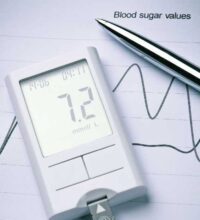 A healthcare system aligned toward patient recovery may reduce healthcare costs by 10%, while improving health and healthcare delivery.
A healthcare system aligned toward patient recovery may reduce healthcare costs by 10%, while improving health and healthcare delivery.
 A healthcare system aligned toward patient recovery may reduce healthcare costs by 10%, while improving health and healthcare delivery. If that isn’t surreal enough, it is likely to happen with the coming transition to performance reimbursement programs.
A healthcare system aligned toward patient recovery may reduce healthcare costs by 10%, while improving health and healthcare delivery. If that isn’t surreal enough, it is likely to happen with the coming transition to performance reimbursement programs.
First, the two obvious questions:
How do you define Patient Recovery?
Patient recovery is when a patient goes from an acute (hospital or emergency room visit) or an adverse chronic state (i.e., diabetes or asthma not under control) to a recovered (back to work, or grandchildren soccer games) or chronic stable state (i.e., COPD, kidney disease under control). The patient defines recovery by their quality of life preferences based of what is reasonably possible with their clinical diagnosis and prognosis.
Isn’t patient recovery what our healthcare system is already doing?
It is not what we are paying our healthcare system to do. Even though most providers are trying to do it anyway, we only pay them to provide clinical services. Also, these services only represent 20% of the factors in health outcomes according to a study by the University of Wisconsin. Health plans and employers (or public health organizations) are also harbored by an antiquated reimbursement system tied to services rather than outcomes like patient recovery.
The three primary approaches to care delivery, which are based on our current reimbursement system, are aligned to “services” rather than “patient outcomes”:
“Case Management” is not patient recovery – A hospital stay, procedure or physician office visit is a service that needs to be cost effectively managed in a way that benefits a patient. Yet providers must tightly manage to the reimbursement level to remain a going entity just like any other service provider. The hospital and other services employ case management & care management, yet this is to cost-effectively manage patient services. Also, most of the time spent by a patient recovering occurs outside the four walls of hospitals or physician offices.
“Utilization Management” is not patient recovery – The most effective health insurance plans ensure patients are getting the right services (Utilization Management) for the right price (negotiated provider network). While utilization management and a quality provider network is the best approach to reduce costs and unnecessary services, it doesn’t necessarily help patient recovery. Health plans are paid to effectively manage health care costs for their customers, not deliver health care. Again, most of the recovery occurs outside of clinical services.
“Population Health” is not patient recovery – While employers, labor unions and public health organization are truly interested in improving the health of their populations, they are not involved in patient recovery. Preventive care (i.e., immunizations, annual screenings), wellness programs (weight loss, exercise, nutrition) and public health initiatives (smoking, alcoholism) are important programs that help people over time, yet they are not designed to deliver patient recovery.
If the three primary approaches to healthcare services “Case Management”, “Utilization Management” and “Population Health” are not patient recovery driven, how do will we get there? We start by developing a system aligned to patient recovery for the people using the most services by leveraging:
Science (See 9 examples in Promising New Patient Recovery Science)
Technology (See Promising New Patient Recovery Technology)
Reimbursement – Performance Programs (See 8 Performance Programs That Will Change Healthcare)
We start with the super utilizers, which are the top 1% of utilizers of healthcare services in the United States, with an average per person healthcare cost of $87,570 per year. These are the people that are in desperate need of a highly focus patient recovery approach. Many super utilizers have 10 or more hospital visits per year like a patient Dr. Jeffrey Brenner identified with 131 visits in one year. A 25% reduction in cost for this 1% of the population alone equals $65B in annual savings.
Once we get a patient recovery system working for the top 1%, we focus on the top 5% of healthcare services utilizers which represents almost 50% of all healthcare spending. A 20% reduction with this 5% of the overall population equals a 10% overall reduction in healthcare spending. This would get more people back to work, increase the number of lawn chairs on the sidelines of youth soccer games and deliver a better quality of life.
The good news is that this approach doesn’t need to be legislated or proposed. The patient recovery science, technology and reimbursement are already on the way to make this happen.
(patient recovery / shutterstock)





